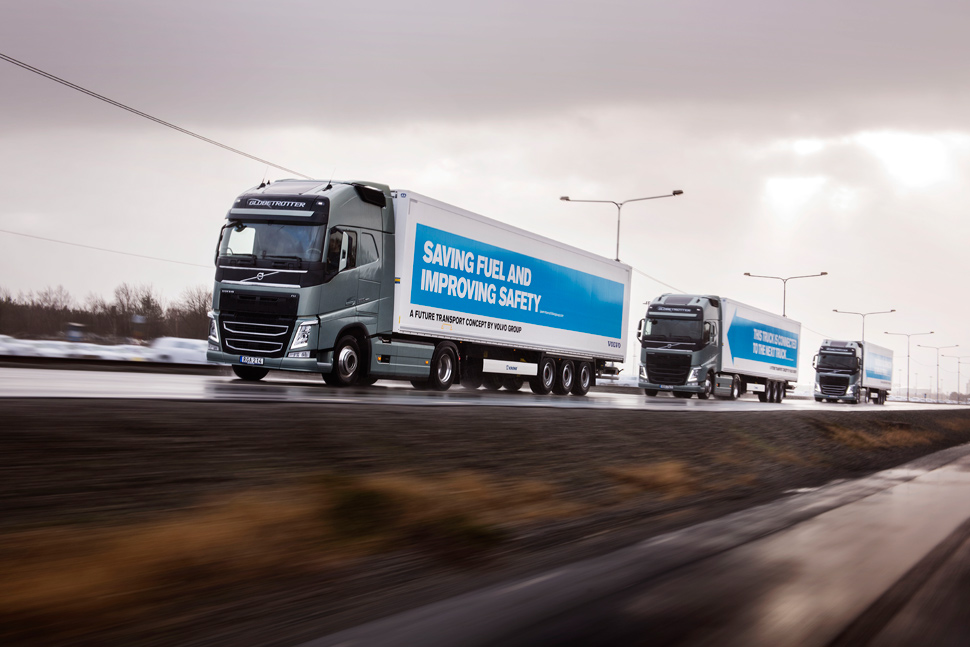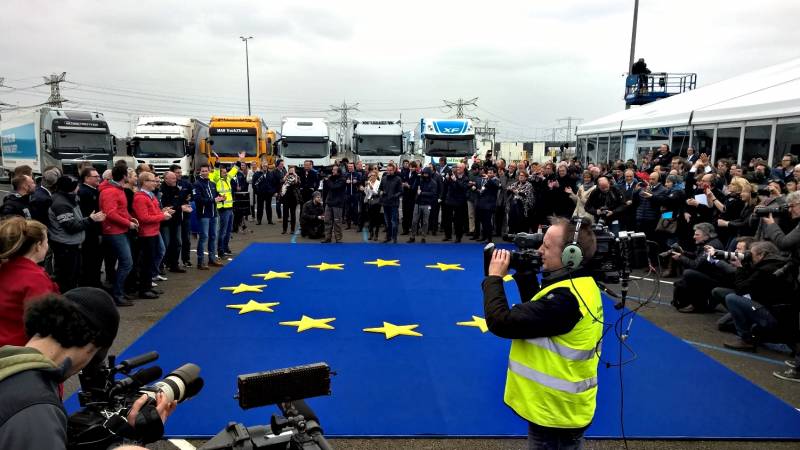
10th April 2016 Self-driving trucks complete journey across Europe Fleets of self-driving trucks this week completed the European Truck Platooning Challenge.
As part of the world's first cross-border initiative with smart trucks, six "platoons" of semi-automated trucks have completed their journeys from various cities across Europe, reaching their final destination at the Port of Rotterdam on 6th April. They were participating in the European Truck Platooning Challenge organised by the Dutch government as part of its EU Presidency. The European Automobile Manufacturers' Association (ACEA) and commercial vehicle members – including Daimler, Scania and Volvo – are active partners of the initiative with each supplying a platoon. One set of trucks made by Scania travelled over 2,000 km and crossed four borders. Daimler made headlines in 2014 when the company demonstrated the world's first autonomous truck in Magdeburg, Germany, and in 2015 its Freightliner Inspiration Trucks gained a licence for road use in Nevada. Truck platooning – which has the potential to make transport cleaner, safer and more efficient – is the linking of two or three trucks in a convoy. These vehicles follow each other at a fixed, close distance, by using connectivity technology and automated driving support systems.
Using this technique cuts fuel use by 15%, prevents human error from causing accidents, and reduces congestion, according to research firm TNO. Expenses can be lowered significantly. Two trucks doing 100,000 miles annually can save €6,000 ($6,840) on fuel by platooning, compared to driving on cruise control. Safety is greatly improved by using technology such as Volvo's emergency braking system and Daimler's Highway Pilot Connect – systems with braking reaction times of under 0.1 seconds, compared to 1.4 seconds for a human driver. A Wi-Fi connection between the trucks ensures synchronised braking and can prevent sudden jolt/shock effects. When operating in platoon mode, a convoy of three semi-autonomous trucks can travel much closer together – requiring only 80 metres of road space, from end to end. For comparison, if they were driven by humans, they would need to fill 185 metres of road. Congestion on roads will therefore be greatly reduced if more and more self-driving vehicles are deployed in the future, while pollution can also be lowered.
Melanie Schulz, Dutch minister for Infrastructure and the Environment who spearheaded this initiative, commented: "The results of this first ever major try-out in Europe are promising. The hands-on experience gained here will be very useful in the informal European transport council on 14th April in Amsterdam. It will certainly help my colleagues and I discuss the adjustments needed to make self-driving transport a reality." There are still a number of barriers standing in the way of truck platooning across Europe. These barriers are not of a technical nature as platooning technology exists already; rather they are caused by differences in legislation between the EU member states: "Harmonisation is needed if we want a wide-scale introduction of platooning," stated Harrie Schippers, President of DAF Trucks. Sufficient demand is also crucial, to ensure the right level of market uptake. Following the Truck Platooning Challenge, there have been encouraging expressions of interest from the business community and the transport sector, including Unilever and major Dutch supermarkets. The testing phase is the most important next step. More and more national governments are offering industry the opportunity to test their latest vehicles and technologies, thereby also supporting efforts to increase public awareness, understanding and acceptance. However, this is also vital on a pan-European scale. "It is precisely for this reason that we believe that the European Truck Platooning Challenge has been a huge success: it has fostered much-needed cooperation between all relevant stakeholders right across the EU, facilitating cross-border driving and encouraging compatibility on legal and technical issues," said Schippers. "We look forward to harvesting the learnings from this initiative so that, together, we can make truck platoons a common sight on Europe's roads in the future."
---
Comments »
|








